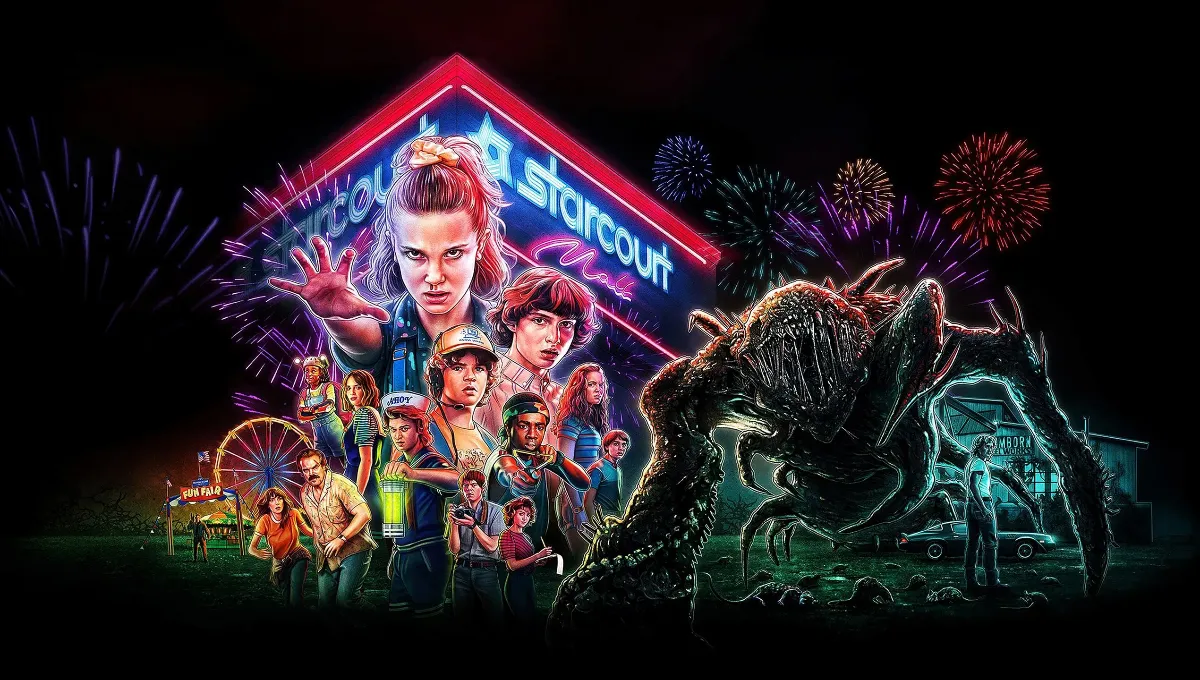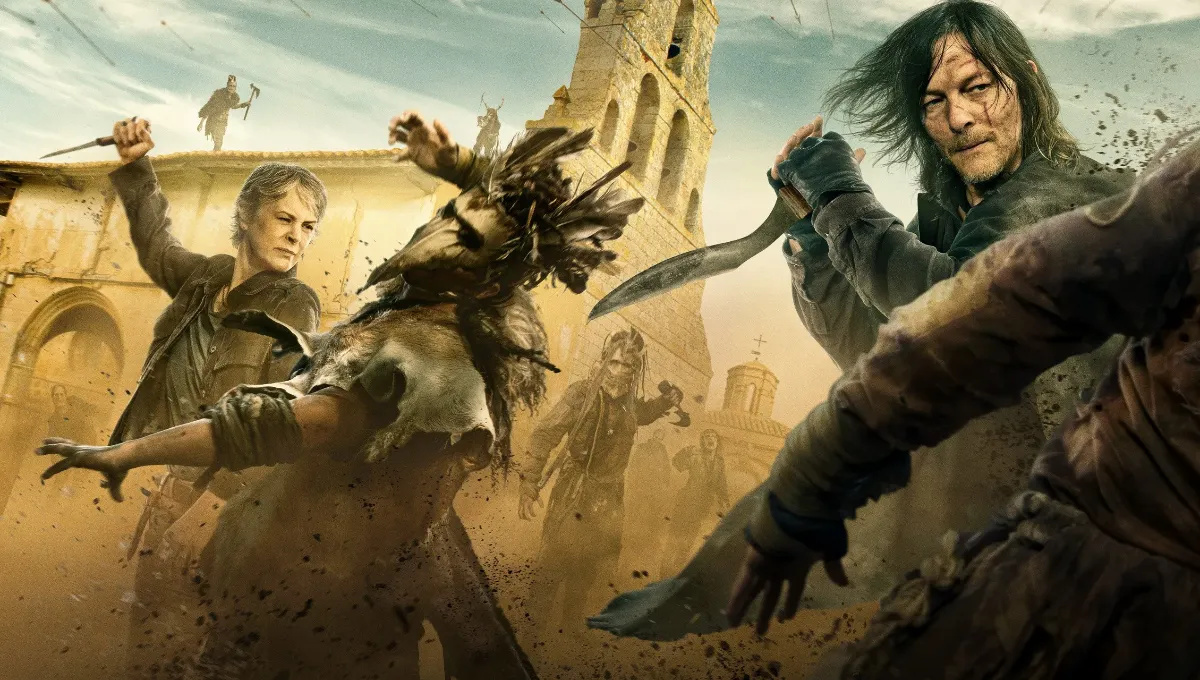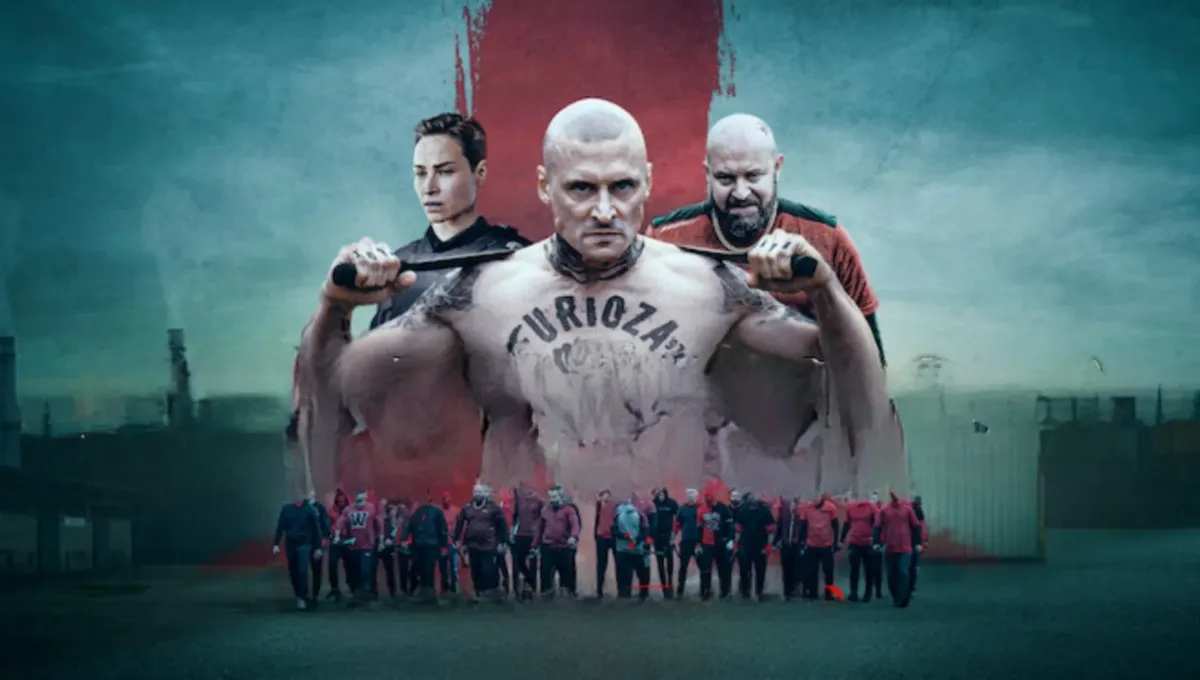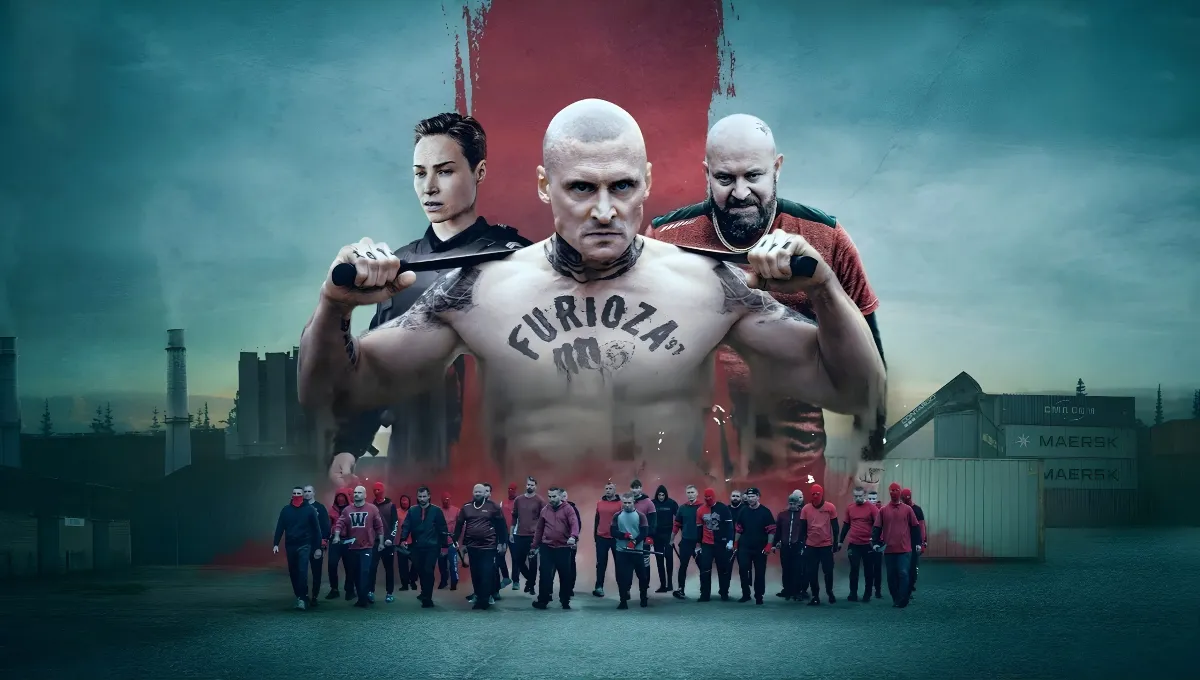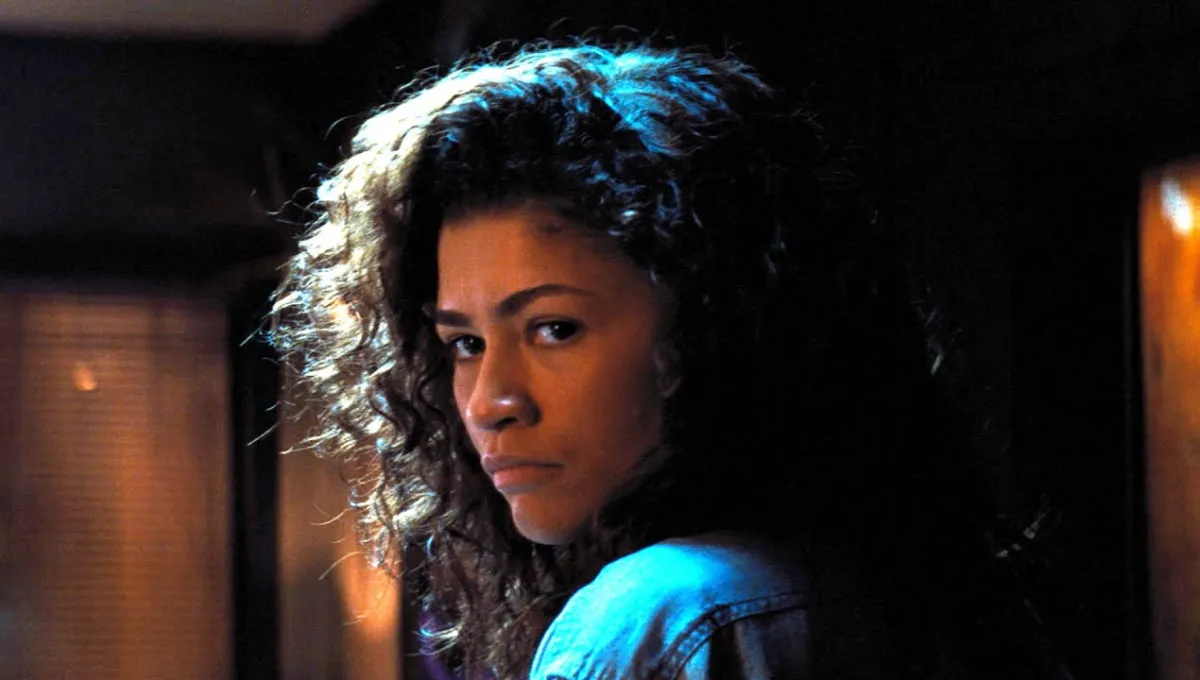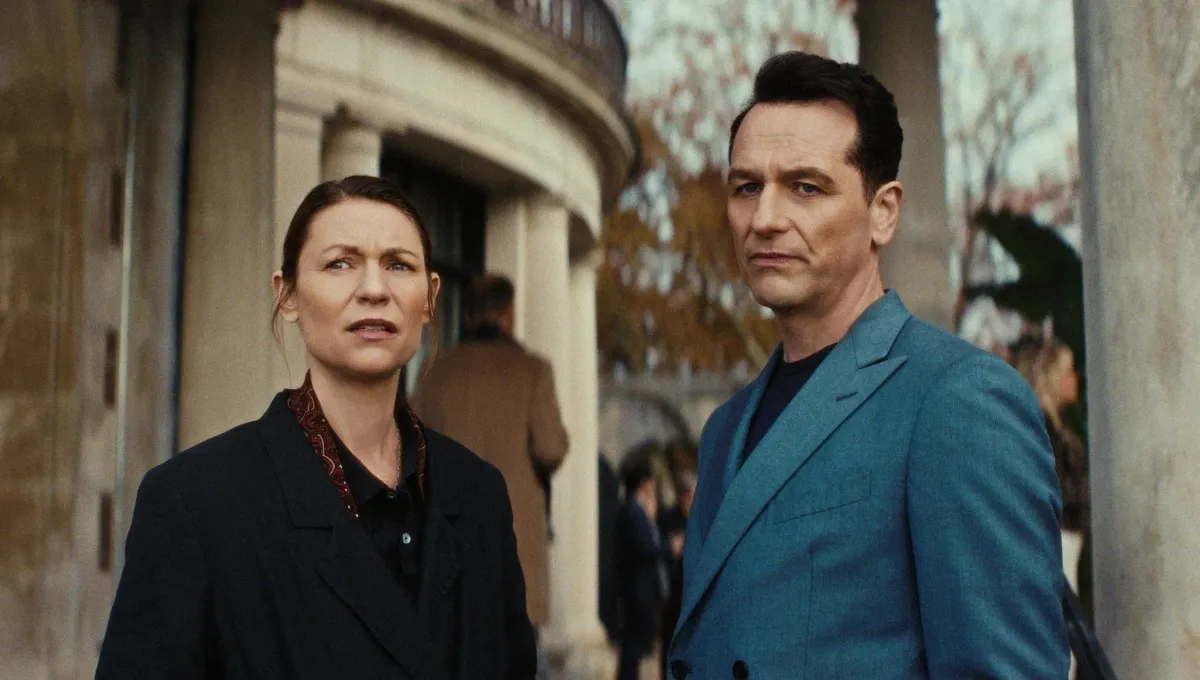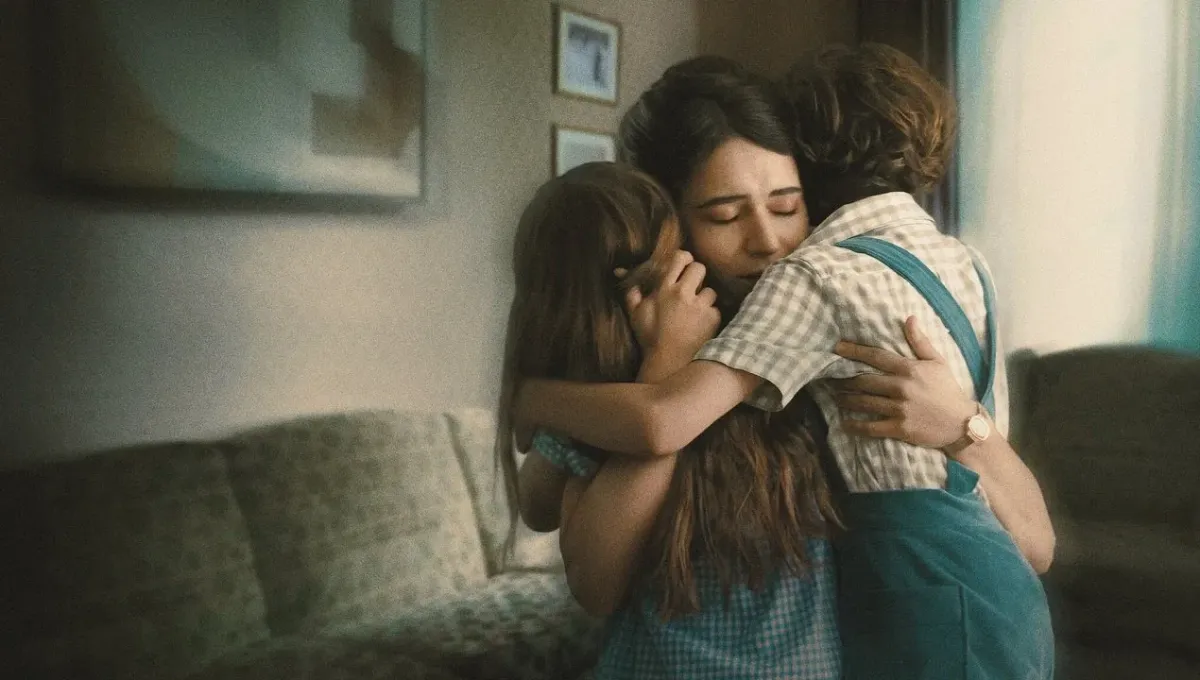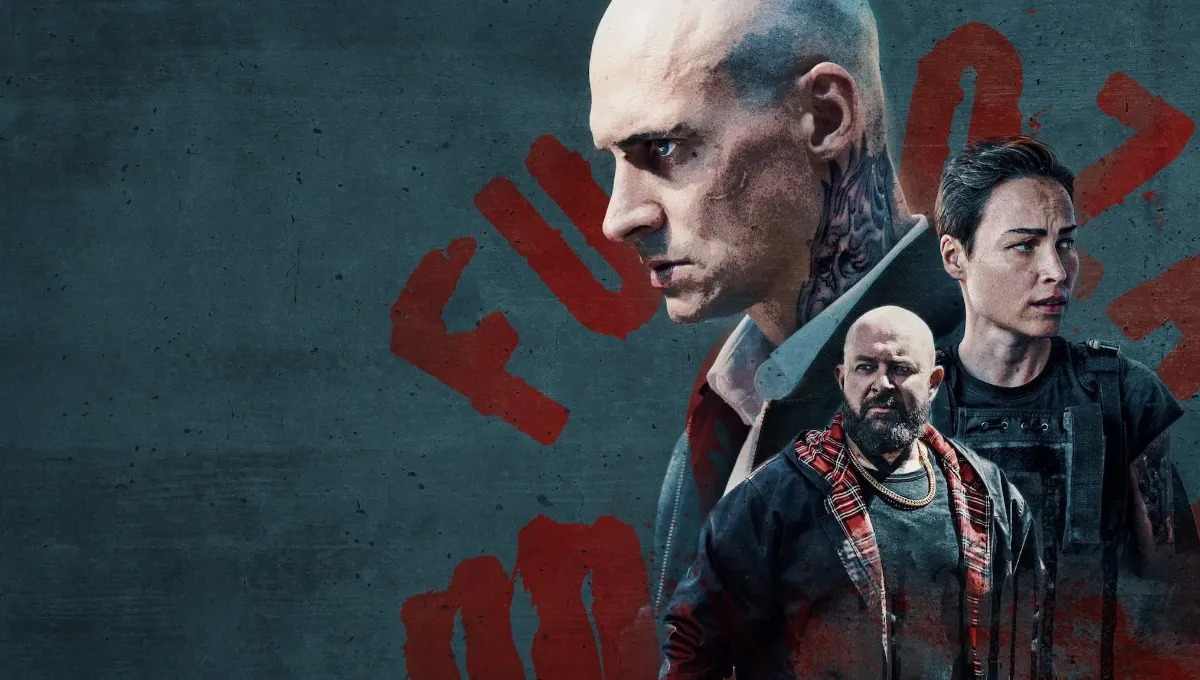The true-crime series Devil in Disguise: John Wayne Gacy (2025) delivers one of the most chilling television experiences of the decade. Created by Patrick Macmanus, this eight-episode crime–drama revisits the real-life terror behind John Wayne Gacy, the seemingly ordinary contractor who hid unimaginable darkness beneath his suburban charm. With a stellar cast led by Michael Chernus, Gabriel Luna, and James Badge Dale, the show goes beyond retelling crimes — it exposes the social blindness and moral failures that allowed one of history’s most horrifying serial killers to thrive.
Michael Chernus as John Wayne Gacy: The Devil Next Door
Every great crime series lives or dies by its villain, and here Michael Chernus delivers a performance of unnerving restraint. Best known for The Menu and Orange Is the New Black, Chernus fully transforms into John Wayne Gacy, the man who dressed as a clown for charity events and murdered at least 33 young men and boys in the 1970s.
Chernus captures both sides of Gacy — the smiling neighbor and the calculating predator. His performance avoids caricature, instead showing a man whose banality makes his evil more terrifying. His calm voice and almost fatherly demeanor make viewers uncomfortable, because it feels too real. This isn’t a monster from fiction — it’s the one who might live across the street.
Gabriel Luna and James Badge Dale: The Hunters of Truth
The cast balances Gacy’s darkness with two exceptional performances from Gabriel Luna (The Last of Us) and James Badge Dale (The Pacific). Luna plays Detective Rafael Tovar, a relentless investigator haunted by the growing number of missing teens. His intensity and empathy make Tovar one of the most compelling characters in the series, representing the conscience of the investigation.
Opposite him, Dale portrays Chief of Detectives Joe Kozenczak, a man torn between political pressure and moral duty. Together, they embody the grind of justice — late nights, false leads, and the creeping realization that something far worse than anyone imagined is unfolding beneath their city. Their partnership forms the backbone of the story and gives the audience a lens through which to experience both horror and heroism.
Michael Angarano and Chris Sullivan: The Legal War
In the courtroom sequences, the series turns from thriller to moral drama. Michael Angarano plays Sam Amirante, the young lawyer who reluctantly defends Gacy. Angarano portrays Amirante’s conflict with nuance — he’s horrified by his client yet bound by law to ensure a fair trial.
Across the aisle, Chris Sullivan (This Is Us, Guardians of the Galaxy Vol. 2) plays Lead Prosecutor Bill Kunkle, whose determination to secure justice is matched by the psychological burden of confronting pure evil. Sullivan’s performance brings gravitas to the courtroom scenes, illustrating that the Gacy trial was not only about punishment but about forcing society to look at itself.
Marin Ireland and Greg Bryk: The Families’ Anguish
While many true-crime dramas fixate on killers, Devil in Disguise gives equal weight to the victims and their families. Marin Ireland (The Umbrella Academy) delivers one of the most heartbreaking performances as Elizabeth Piest, mother of 15-year-old Rob Piest, whose disappearance exposed Gacy’s crimes. Ireland’s portrayal of grief and determination reminds viewers that behind every headline was a parent begging to be heard.
Greg Bryk (Vikings, Saw V) plays Harold Piest, whose quiet strength and anguish mirror the emotional devastation of the case. Ryker Baloun portrays Rob Piest himself, his innocence making his fate all the more tragic. Their combined performances ensure the human cost of the story is never lost beneath procedural detail.
Etienne Kellici and Supporting Performances: Faces of the Forgotten
Among the cast, Etienne Kellici stands out as Samuel Stapleton, one of Gacy’s young victims. His brief appearance is haunting, giving a name and face to those often reduced to statistics. These small roles are essential — they restore identity to the forgotten and reinforce the series’ message: every victim mattered.
The show uses these moments sparingly but powerfully, layering each episode with emotional realism. This structure — alternating between investigation, family grief, and Gacy’s chilling normalcy — keeps the audience on edge without resorting to sensationalism.
Patrick Macmanus’s Direction: Horror Without Exploitation
Creator and showrunner Patrick Macmanus crafts Devil in Disguise with the precision of a documentary and the intensity of a psychological thriller. The muted 1970s palette, low-key lighting, and immersive sound design create a suffocating sense of dread. Rather than showing graphic violence, the camera lingers on reactions — the detectives’ disbelief, a mother’s trembling hands, the slow uncovering of the crawl space beneath Gacy’s home.
This stylistic restraint makes the series more powerful. The terror lies not in what’s seen but in what’s implied. The result is a show that respects real victims while still gripping the audience like a top-tier suspense drama.
Themes: Evil, Denial, and the Fragility of Trust
Beyond crime, Devil in Disguise: John Wayne Gacy (2025) is about how evil thrives in the ordinary. The series questions why communities ignored warning signs — the smell from Gacy’s house, the missing boys, the contradictions in his stories. It’s a chilling reflection on social denial, masculinity, and the failure of empathy.
Gacy’s mask of normalcy becomes a metaphor for a culture unwilling to look beneath the surface. The title “Devil in Disguise” isn’t just about Gacy’s clown persona; it’s about every person, institution, and neighbor who refused to see the truth until it was too late.
A Cast That Humanizes Horror
The ensemble cast is uniformly strong.
-
Michael Chernus commands every scene as Gacy, balancing charisma and dread.
-
Gabriel Luna and James Badge Dale bring urgency and humanity to the procedural side.
-
Marin Ireland and Greg Bryk give the show its emotional depth.
-
Michael Angarano and Chris Sullivan illustrate the ethical gray zones of the legal world.
Together, they transform Devil in Disguise from a simple true-crime reenactment into a profound study of morality, grief, and courage.
Why This Series Matters
In an age flooded with true-crime content, Devil in Disguise: John Wayne Gacy distinguishes itself by focusing on truth over thrill. It’s not about glorifying a killer; it’s about remembering victims, examining systems, and confronting collective apathy.
For modern audiences, the series resonates because it forces uncomfortable questions: How many Gacys walk unnoticed among us? How often do we excuse strange behavior until tragedy strikes? And how far will society go to protect its illusion of safety?
By the final episode, Devil in Disguise: John Wayne Gacy (2025) stands as one of the most powerful crime–drama series in recent memory. It’s haunting, intelligent, and unflinchingly human. The cast delivers performances that linger long after the credits roll, while Macmanus’s direction ensures that horror serves purpose, not spectacle.
The show doesn’t offer catharsis — only clarity. Evil, it suggests, rarely looks like a monster. More often, it smiles, shakes your hand, and says it’s just trying to help.

Grace Whitmore is a beauty and lifestyle editor at Nestification, exploring the intersection of modern femininity, quiet luxury, and emotional design. Her work focuses on how aesthetics, mindfulness, and self-expression shape today’s idea of calm confidence — where beauty becomes a state of mind.
Based in New York · [email protected]



